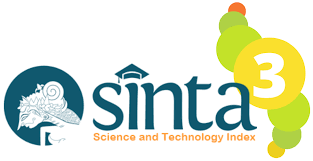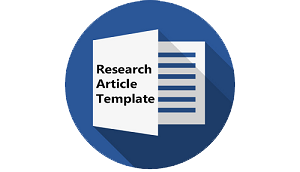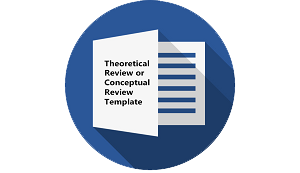PENGARUH TENIK COMPREHENSIVE MODELLING TERHADAP MUTU LINGUISTIS, RETORIKA DAN MEKANIS PADA ARTIKEL JURNAL PENELITIAN MAHASISWA
DOI:
https://doi.org/10.30957/lingua.v16i1.573Keywords:
comprehensive writing, writing achievementAbstract
 This study was intended to test the differences between the students who were given comprehensive modeling and those who are not given comprehensive modeling concerning with their achievement of Scientific Journal Writing in English Educational Department of IAIN Surakarta. The sample consists of 34 students randomly selected from the population. Data were collected by administering the writing test and analyzed by correlated sample t-test. The result revealed that there was a significant difference between students who were given comprehensive modeling and those who were not given comprehensive modeling in their achievement of Scientific Journal Writing in English Educational Department of IAIN Surakarta. It was derived that p=.000 >.005. So, the alternate hypothesis stating that the EFL students who were given comprehensive modeling have higher achievement in Scientific Journal Writing than those given conventional method was accepted. It means that the comprehensive modeling is an effective way to develop students' achievement in Scientific Journal Writing in English Educational Department of IAIN Surakarta.
Â
Â
Downloads
References
Ardian. 2008. Pengaruh Strategi Pengorganisasian Elaborasi Dan Gaya Kognitif Spasial Mahasiswa Terhadap Hasil Belajar Gambar Mesin. eprints. uny. ac. id/4697/
Brown, G. and Yule, G. 1981. Discourse Analysis. Cambridge: Cambridge University Press.
Heaton, J,B. 1989. Writing English Language Tests. London: Longman.
Hedge, Tricia. 2003. Teaching and Learning in the Language Classroom. Oxford. University Press.
Hogins, JB and Lillard T. 1972. The Structure of Writing. Rowly, Massachusetts: D.C. Heath and Company.
Latief, M.A. 1990. Assessment of English Writing Skills for Students of English as a Second Language at IKIP MALANG Indonesia. Unpublished Ph.D. Dissertation. Iowa City, Iowa: The University of Iowa.
Oshima, A. and Houge, A. 1991. Writing Academic English: A Writing and Sentence Structure Handbook. Second Edition. Cambridge: Addison-Wesley Publishing Company.
Reid, Joy. 1994. Responding to ESL Students’ Text. The Myth of Appropriation. TESOL Quarterly 28 (2): 273-292.
Richard, J.C and Renandya, W.A. 2002. Methodology in Language Teaching. An Anthology of the Current Practice. Cambridge University Press. Cambridge.
Segal, M.S and Pavlik Cheryl. Interaction I, A Writing Process Book. New York. Random House.
Sholikhah, Imroatus. 2017. Drafting and Revising Strategies to Develop English essay by EFL Indonesian Learners. International of Advanced Research. 5 (3). IJAR
Sujito, N. Kurniasih, W.M. Muttaqin, I.N. Sari, A.P. Saleky, P. Tuasikal, Y. Talakua, B.M. Laka, A. Niwele, and F. Aziz. 2018. “Applying ELMS Technology Based Teaching Strategy to Improve Writing Competence for EFL Remedial Students across Different Motivation Level.†International Journal of Engineering and Technology(UAE) 7 (3.2 Special Issue 2).
Sujito, Sujito, and Rina Widjajanti. 2017. “Reusing the Product Oriented Writing to Enhance the First Year EFL Undergraduate Field Independent Students’ Writing Achievement.†In 3rd International Conference on Education and Training (ICET 2017). Atlantis Press. https://doi.org/10.2991/icet-17.2017.18.
Sun, Shunling. 2009. Process Approach to Teaching Writing Applied in Different Teaching Model. English Language Teaching Journal, Vol 2 No.1 2009
Winkler, A.C and McCuen, J.R. 1974. Rhetoric Made Plain. New York: Harcourt Brace Jovanocich, Inc.
Uyanto, S.S. 2009. Pedoman Analisis data dengan SPSS. Yogyakarta: Graha Ilmu.
Downloads
Published
How to Cite
Issue
Section
License
Authors who publish with this journal agree to the following terms:
- Authors retain copyright and grant the journal right of first publication with the work simultaneously licensed under a Creative Commons Attribution-ShareAlike 4.0 International License that allows others to share the work with an acknowledgement of the work's authorship and initial publication in this journal.
- Authors are able to enter into separate, additional contractual arrangements for the non-exclusive distribution of the journal's published version of the work (e.g., post it to an institutional repository or publish it in a book), with an acknowledgement of its initial publication in this journal.
- Authors are permitted and encouraged to post their work online (e.g., in institutional repositories or on their website) prior to and during the submission process, as it can lead to productive exchanges, as well as earlier and greater citation of published work (See The Effect of Open Access).















